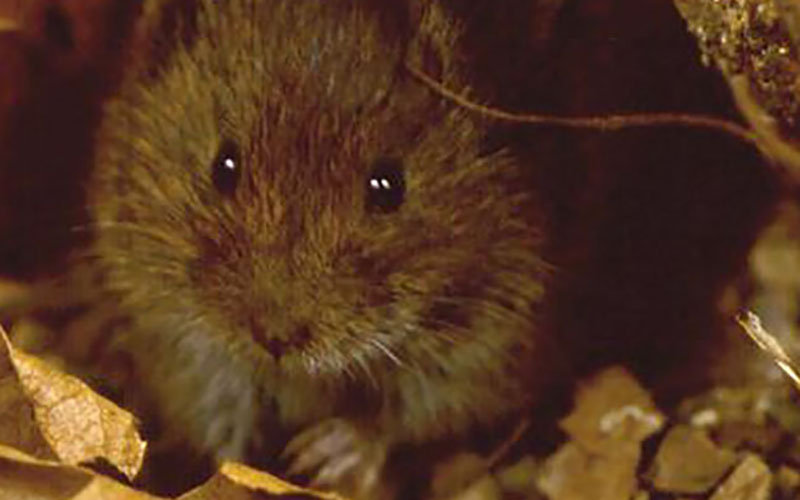
The Hualapai Mexican vole was listed as an endangered subspecies of Mexican vole in 1987, but federal officials are now taking it off the endangered list, saying they no longer believe it’s a subspecies in need of protection. (Photo by George Andrejko/Arizona Game and Fish Department)
WASHINGTON – Federal officials said Friday they will remove the Hualapai Mexican vole from the endangered species list after 30 years, a move that one environmental group criticized as “premature” for an animal it says could still be at risk.
The U.S. Fish and Wildlife Service said Friday that the original 1987 decision to protect the Hualapai Mexican vole in Arizona as an endangered subspecies of other Mexican voles was made in error. Subsequent studies have indicated that it is not sufficiently different from other Mexican voles – of which there are many – to be considered a subspecies.
But an official with the Center for Biological Diversity said the issue is far from settled.
“They’ve basically cherry-picked one genetic study to try to remove protections, and they’ve ignored the contradictory studies,” said Jeff Miller, a conservation advocate with the center.
Miller said the decision to “delist” the Hualapai Mexican vole was based on an unpublished 2001 study that he said was not definitive, and that its premise that the vole is not a subspecies has not been supported in several peer reviews.
He called it “fishy” to delist a species without solid scientific consensus.
“There’s no valid justification for removing the protections,” Miller said. “Conflicting scientific information is not a valid reason.”
But the Arizona Ecological Services office of the U.S. Fish and Wildlife Service defended the decision, calling the vole “no longer listable.”
“The way it was listed is clearly not a subspecies,” said Steve Spangle, the office’s field supervisor. “There was never any question about that.”
When the animal was first listed in 1987, however, it was considered of three subspecies of Mexican vole: the Hualapai, the Navajo and the Mogollon.
Similar to a field mouse, voles are small and furry rodents with tails about as long as their bodies and “long fur that nearly covers its small round ears,” according to Fish and Wildlife.
At the time its listing, the voles in the Hualapai Mountains near Kingman were believed to be in danger of losing habitat to grazing, drought, road construction, recreational and other human activities. A recovery plan was developed in 1991, but no critical habitat was ever designated.
The request to remove the Hualapai Mexican vole came from the Arizona Game and Fish Department in 2004, when it raised the claim that the protected subspecies was not distinguishable from the larger Mexican vole population.
A request for comment on the delisting from the Game and Fish Department was not immediately returned Friday.
Miller said the change in the vole’s status reflects a larger trend toward removing species from the list for political reasons, a trend he fears will pick up steam under President Donald Trump and the Republican-controlled Congress.
This administration and this Congress have pushed to “arbitrarily remove various species with no regard to whether they’ve recovered or are still endangered,” he said.
But Spangle said it is clear that the Hualapai Mexican vole does not belong on the endangered species list as a subspecies. He said the broader species of Mexican vole is not under federal protection, but it “seems to be doing well” and that he was not aware of any threats to the species.
The Fish and Wildlife Service’s rule delisting the animal takes effect July 24.